|
|
|
Alpha Chi Sigma Hall of Fame
The Alpha Chi Sigma Hall of Fame was established in 1982 to recognize outstanding members of the Fraternity and to publicize their contributions to the science and profession of chemistry. Nominations to the Hall of Fame may be made by any member of the Fraternity. To submit a nomination, contact the Grand Vizier. Selections are made by the Supreme Council. The initiating chapter of the honoree receives a certificate.
The original Hall of Fame consisted of seven members, and for several years new inductees were added every year. Currently, the Supreme Council may induct two new members each biennium with the presentations being made at Conclave. The costs of administering the Hall of Fame are borne by the Alpha Chi Sigma Education Foundation.
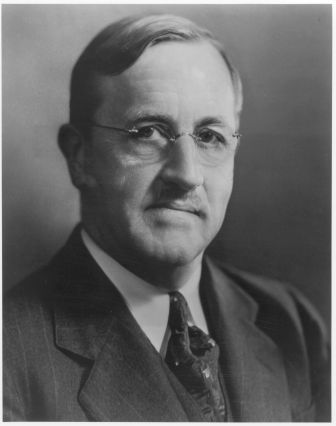 |
Roger Adams Omicron 1912 Inducted in 1989
Roger Adams was educated at Harvard University and taught there briefly before moving to the University of Illinois. During WWI, when the supplies of German chemicals was cut off to American laboratories, Adams led the "preps" lab at the University of Illinois as it manufactured large supplies of specialized organic chemicals to supply U.S. needs. This activity led him to initiate Organic Syntheses and later Organic Reactions. Adams had an extraordinary talent for attracting and training students (184 Ph.D. students and 50 postdoctorates) to whom he was respectfully known as "The Chief." His honors and awards include the National Medal of Science, the American Chemical Society's Priestly Medal and membership in the National Academy of Science. He was president of the American Chemical Society in 1935 and of the American Association for the Advancement of Science in 1950.
|
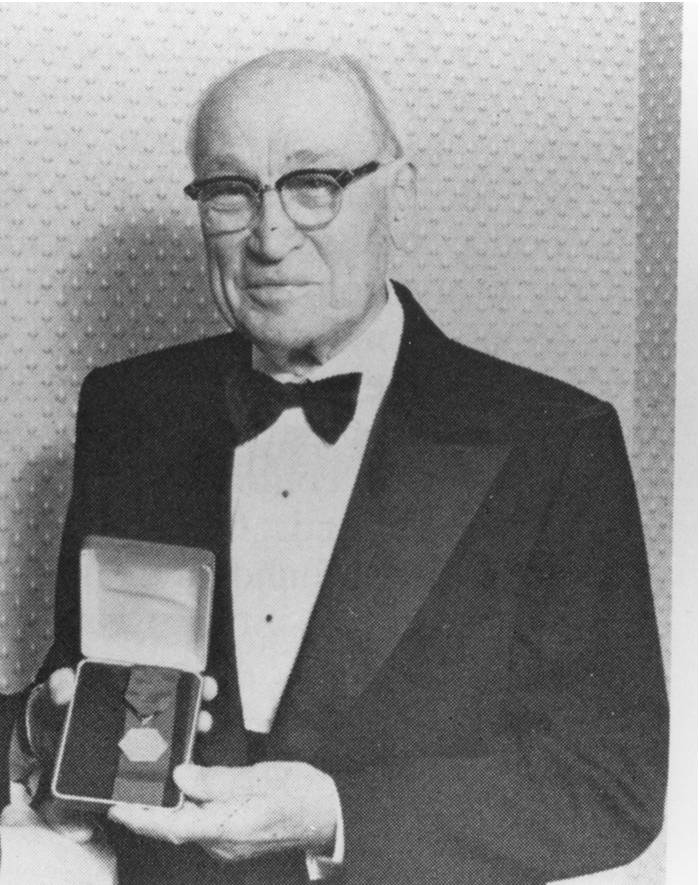 |
Arnold O. Beckman Zeta 1921 Inducted in 1996
Globally known as the inventor of the pH meter, Arnold O. Beckman was the first to apply electronics to direct chemistry measurement. He also developed the ultraviolet spectrophotometer, which revolutionized a number of chemical analyses. In 1987, Beckman was inducted into the National Inventors Hall of Fame. In 1988, he was presented with the National Medal of Technology by President Ronald Regan, and in 1989, President George H. W. Bush presented him with the National Medal of Science. In addition to being an inventor and entrepreneur, Beckman also was a philanthropist. The Arnold and Mabel Beckman Foundation supports five Beckman Institutes and Centers at major universities, a vigorous Young Investigators Program and a variety of other research efforts.
|
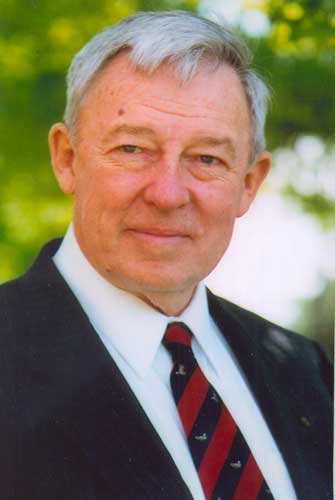 |
R. Byron Bird Alpha Rho 1943 Inducted in 2008
R. Byron Bird earned his bachelor's degree in chemical engineering from the University of Illinois and his doctorate degree from the University of Wisconsin. Bird's postdoctoral work was at Instituut voor Theoretische Fysica, Universiteit van Amsterdam, after which he joined the faculty at the University of Wisconsin. Bird's interests include transport phenomena, polymer fluid dynamics, polymer kinetic theory and rheology. He is co-author of Transport Phenomena, the classic textbook referred to by chemical engineers simply as BSL, after the authors. Since the publication of this textbook, the subject of transport phenomena has become a standard course in chemical engineering curricula in the U.S. and abroad. Bird was a Fulbright Lecturer in the Netherlands and in Japan and is a recipient of the National Medal of Science and the Society of Engineering Science A.C. Eringen Medal for Outstanding Achievements in Engineering Science.
|
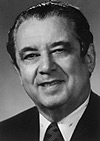 |
Herbert C. Brown Beta Nu 1960 Inducted in 2000
Herbert C. Brown received his doctorate degree from the University of Chicago. Brown’s research in boranes and organoboranes is well known, as is his work in non-classical ions, on a quantitative theory of aromatic substitution and on steric effects. This work has been recognized with various awards and prizes, including election to the National Academy of Sciences in 1957, the American Chemical Society Award for Creative Research in synthetic organic chemistry in 1960, the Priestley Medal in 1981, the Herbert C. Brown Award for Creative Research in Synthetic Methods in 1998 (he was the first recipient), the National Medal of Science in 1969, the American Institute of Chemist's Gold Medal in 1985 and the Nobel Prize in Chemistry in 1979.
|
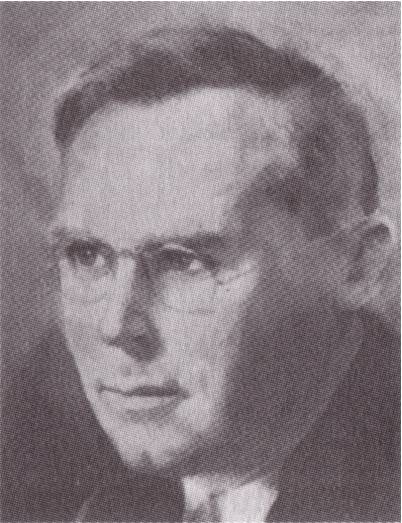 |
Wallace Hume Carothers Zeta 1926 Inducted in 1982
Wallace Hume Carothers received his doctorate degree under the direction of Roger Adams, Omicron 1912, at the University of Illinois. After that, he was a chemistry instructor in at the University of Illinois (1924) and Harvard University (1924-27). He also was director of organic chemistry in the Central Research Laboratory of E.I. DuPont de Nemours and Company from 1927 to 1937. Carothers is considered a pioneer in both the theory and applications of polymer chemistry. Carothers and his associates laid the foundations for the synthetic fiber (nylon) and elastomer (neoprene) industries in the United States. Author Arvind Viswanathan has said, "No investigator has excelled Wallace Hume Carothers in advancing our knowledge of high polymeric chemistry and at the same time providing a basis for the development of technically-useful synthetic polymeric materials."
|
 |
Gregory R. Choppin Beta Iota 1973 Inducted in 2010
Gregory R. Choppin received a bachelor’s degree in chemistry, Maxima cum laude for his unequalled scholastic average, from Loyola University and his doctorate degree from the University of Texas. From 1953 to 1956 Dr. Choppin was a postdoctoral research associate at the Lawrence Berkeley Laboratory where he worked with Glenn T. Seaborg and his team on new elements. During that time he was a codiscoverer of Element 101, Mendelevium. In 1956 he joined the Department of Chemistry at Florida State University. He served as chair of the department from 1968 to 1977 and again from 1993 to 1994. In 1967 he was named the R.O. Lawton Distinguished Professor at FSU. Dr. Choppin has received numerous awards in recognition of his contributions to chemical research. He has received the Alexander Von Humbolt U.S. Senior Scientist Award, the ACS Award for Nuclear Chemistry, the Seaborg Award in Separation Science, the Southern Chemist Award of the ACS, the Gold Medal of the Florida Academy of Sciences, a Presidential Citation for Outstanding Service to Nuclear Science and Technology by the American Nuclear Society, American Institute of Chemist Award for work in nuclear reactions and chemical education and The Becquerel Medal by The Royal Society of Chemist. Dr. Choppin has an honorary doctor of science degree from Loyola and a honorary doctor of technology degree from Chalmers University of Goteborg, Sweden.
|
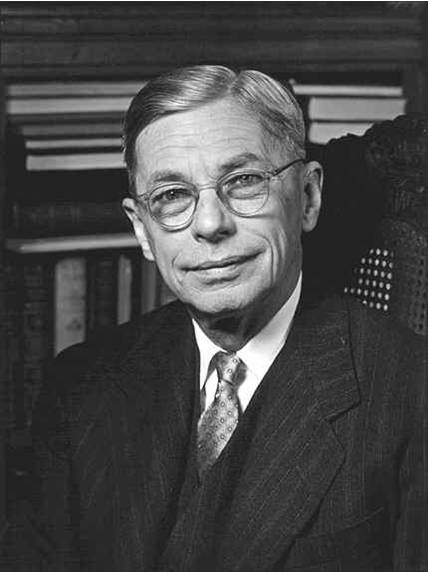 |
James Bryant Conant Omicron 1912 Inducted in 2000
James Bryant Conant received his doctorate degree from Harvard University and later became the president of Harvard University. A founding member of Omicron Chapter, Conant was an early contributor to physical organic chemistry. He was elected to the National Academy of the Sciences in 1929. He served in various governmental positions during and following World War II, including the National Defense Research Committee, the National Science Board and the Atomic Energy Committee. He also served on the cabinet-level committee overseeing the Manhattan Project. In his lifetime, Conant was granted 52 honorary doctorate degrees and several awards, including the Presidential Medal of Freedom and the Priestley Medal in 1944.
|
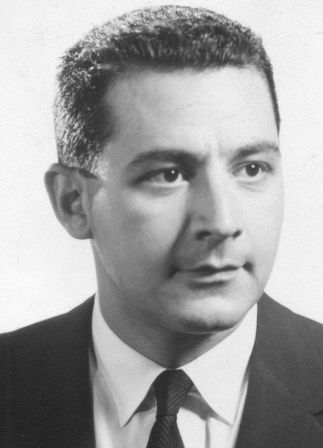 |
Elias J. Corey Zeta 1952 Inducted in 1998
Elias J. Corey received his doctorate degree from the Massachusetts Institute of Technology. After graduation, he continued at MIT as a member of a program on synthetic penicillins. In 1950 he joined the University of Illinois as a chemistry instructor. In 1959, he accepted a professorship at Harvard. His interests in chemistry have covered metal complexes, synthesis and enzyme chemistry. He pioneered the method of retrosynthetic analysis and was the first to achieve the first chemical synthesis of prostaglandins. He received the 1990 Nobel Prize in Chemistry for his development of the theory and methodology of organic synthesis.
|
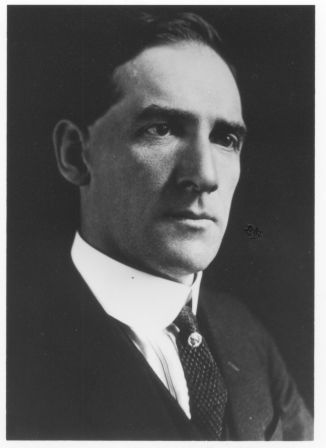 |
Frederick Gardner Cottrell Sigma 1917 Inducted in 1982
Frederick Gardner Cottrell received his bachelor's degree from the University of California at Berkeley in 1896 and his doctorate degree from Leipzig, under the direction of Wilhelm Ostwald, in 1902. For many years, he worked for the U.S. Bureau of Mines, finally as its director. He is the inventor of the electrostatic "Cottrell" precipitator for removing particulate matter from flue gases. He used the royalties from this invention to form the Research Corporation for Science Advancement, which to this day funds imaginative scientific projects. Cottrell said, "[I am] willing to risk, or even sacrifice on occasion, possible legitimate profits...if thereby a more important public service can be rendered."
|
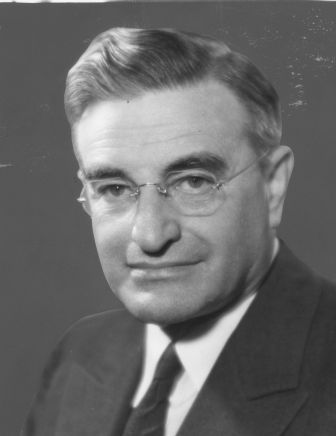 |
Farrington Daniels Beta 1908 Inducted in 1982
Farrington Daniels received his bachelor's degree from the University of Minnesota in 1910 and his doctorate degree from Harvard University in 1912, under the direction of Theodore William Richards. Daniels served as a member of the faculty of the University of Wisconsin from 1920 to 1972 where he succeeded Alpha Chi Sigma founder J. Howard Mathews as chairman of the Department of Chemistry in 1952. He also served as president of the American Chemical Society in 1953 and received the ACS's Priestley Medal. Daniels was a renowned pioneer in gas-phase kinetics and solar and nuclear energy. He also authored the standard physical chemistry text, popularly known as Getman and Daniels, Daniels, Daniels and Alberty and, now, Alberty and Daniels.
|
 |
Peter J. W. Debye Tau 1941 Inducted in 1982
Peter J.W. Debye received his doctorate degree from the University of Munich under the direction of Arnold Sommerfield. After serving on the faculties of the universities of Zurich, Utrecht, Gottingen, Leipzig and Berlin, he joined the faculty of the Department of Chemistry at Cornell University in 1940 as chairman. During his long career, he made fundamental contributions to physical chemistry in many areas, including X-ray scattering, dipole moments, light scattering and its application to macromolecules, electrolytic solutions (Debye-Huckel theory), heat capacities of solids and magnetization at low temperatures (principle of adiabatic demagnetization). Debye was the 1936 Nobel Laureate in Chemistry.
|
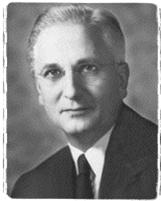 |
Willard H. Dow Alpha Beta 1917 Inducted in 2004
Willard H. Dow earned his bachelor's degree from the University of Michigan in 1919. He succeeded his father, Herbert H. Dow, as president of the Dow Chemical Company in 1930. He was a pioneer in developing and producing a wide variety of plastics materials, including cellulose ethers, polystyrene, polystyrene foam, Saran, divinylbenzene-based ion-exchange resins and styrene butadiene latexes. In his 19-year tenure as president of the Dow Chemical, the company made chemical and industrial history, growing in a time of decline. He was adventurous and visionary when others might have been conservative, and he turned Dow Chemical into a $200 million corporation of diverse companies and nearly 600 different commercial products, most of which were unknown in 1930. He received many honors during his lifetime, including three honorary doctorates, Columbia University's Chandler Medal in 1943, the Gold Medal of the American Institute of Chemists in 1944 and the Medal for the Advancement of Research from the American Society for Metals in 1948. He was inducted into the Plastics Hall of Fame in 1975. Dow perished in an airplane crash in 1949.
|
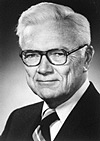 |
Paul John Flory Tau 1949 Inducted in 2002
Paul John Flory received degrees from Manchester College and The Ohio State University. Following an active industrial career with DuPont, ESSO Labs and Goodyear Tire & Rubber, Flory joined the faculty of the Department of Chemistry at Cornell University. He later spent a brief time as the executive director of research at the Mellon Institute before going on to Stanford University, where he remained until (and beyond) his retirement. Flory's work in polymer chemistry, including polymerization mechanisms, configurational statistics and physical and thermodynamic properties of high polymers, earned him numerous honors, including the American Chemical Society's Debye Award in 1969, the Gibbs Medal in 1973, the Priestley Medal in 1974, the National Medal of Science and the Nobel Prize in Chemistry in 1974.
|
 |
Mary Lowe Good Beta Phi 1976 Inducted in 2002
Mary Lowe Good received degrees from the Arkansas State Teachers College and the University of Arkansas. Her first career was in academe, beginning at the Louisiana State University in Baton Rouge and later at the New Orleans campus of LSU. Her research included inorganic and radiation chemistry. Good then moved to Universal Oil Products as director of research, a company later acquired by AlliedSignal, and rose to the position of senior vice president of technology. In 1993, her career took another turn when she was appointed under secretary for technology in the U.S. Department of Commerce. She now has returned to academe, serving as dean of the Donaghey College of Information Science and Systems Engineering at the University of Arkansas-Little Rock. But she also is the managing partner of Venture Capital Investors, LLC, in Little Rock. A participant in all aspects of her profession, Good found time to serve as chair of the board of directors and later as president of the American Chemical Society. Her service and professional accomplishments have been recognized by several awards, including the Garvan Medal in 1973, the Priestley Medal in 1977 and the Parsons Award of the ACS in 1991.
|
 |
Harry B. Gray Upsilon 1958 Inducted in 2012
After completing his graduate work at Northwestern University and postdoctoral research at the University of Copenhagen, Harry B. Gray joined the chemistry faculty at Columbia University, where in the early 1960s he developed ligand field theory to interpret the electronic structures and substitution reactions of metal complexes. After moving to the California Institute of Technology in 1966, he began work in biological inorganic chemistry and solar photochemistry, including the development of inorganic systems for energy storage. Harry has published more than 800 research papers and 18 books. He has received numerous American and international awards. He currently is the Arnold O. Beckman Professor of Chemistry and the founding director of the Beckman Institute at Caltech.
|
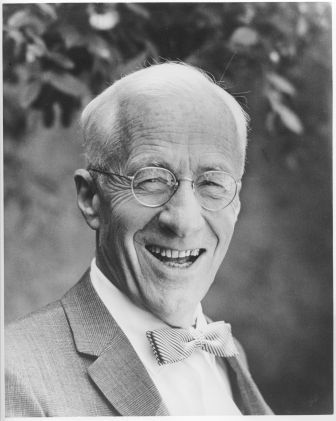 |
Joel H. Hildebrand Sigma 1913 Inducted in 1984
Joel H. Hildebrand received both his bachelor's and doctorate degrees from the University of Pennsylvania. After spending a year as a postdoctoral fellow with J.H. van't Hoff and Walther Nernst in Berlin, Hildebrand returned to the University of Pennsylvania where he taught from 1907 to 1913. In 1913, he accepted the invitation of Gilbert N. Lewis, Sigma 1913, to join the faculty at the University of California at Berkeley. Hildebrand taught there until past the age of 70. He considered his lifelong work on the behavior of liquids and nonelectrolyte solutions his most important contribution to chemistry. Hildebrand was the recipient of numerous awards, including having a chemistry building named for him while he was still living.
|
 |
Darleane C. Hoffman Sigma 1988 Inducted in 2002
Darleane C. Hoffman received both her bachelor's and master's degrees from Iowa State University. She briefly joined the staff of the Oak Ridge National Laboratory before moving to the Los Alamos Laboratory, where she spent nearly 30 years, rising to the position of division leader. She then moved to the Lawrence Berkeley Laboratory, where she was named a senior scientist and a group leader of the Heavy Element Nuclear & Radiochemistry Group in the Nuclear Science Division. At the same time, Hoffman joined the faculty of the Department of Chemistry at the University of California at Berkeley. From 1991 to 1996, she served as the director of the Seaborg Institute for Transactinium Science and remains a senior research advisor to the institute. In 1994, she was named a professor of the graduate school at UC-Berkeley. For her work in nuclear and radiochemistry, Hoffman received the American Chemical Society Award in Nuclear Chemistry in 1983, the Garvan-Olin Medal in 1990, the U.S. Medal of Science in 1997 and the Priestley Medal in 2000.
|
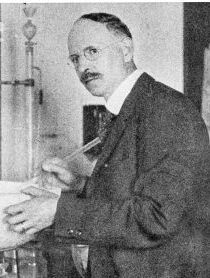 |
Charles James Mu 1911 Inducted in 2000
Charles James was educated at the Institute of Chemistry at University College in London where he was mentored by Sir William Ramsey and John Norman Collie. James started teaching at the New Hampshire College in 1907 and was head of the Chemistry Department from 1912 until his death in 1928. He is a founding member of Mu Chapter. James' main research interest was rare earth chemistry and fractional crystallization for separation. Through his research, he separated lutetium from what was thought to be ytterbium and provided highly purified rare-earth samples for research throughout the world. Mu Chapter describes him this way: “His creed in life is well represented by the Three Objects of Alpha Chi Sigma; he was a true member.”
|
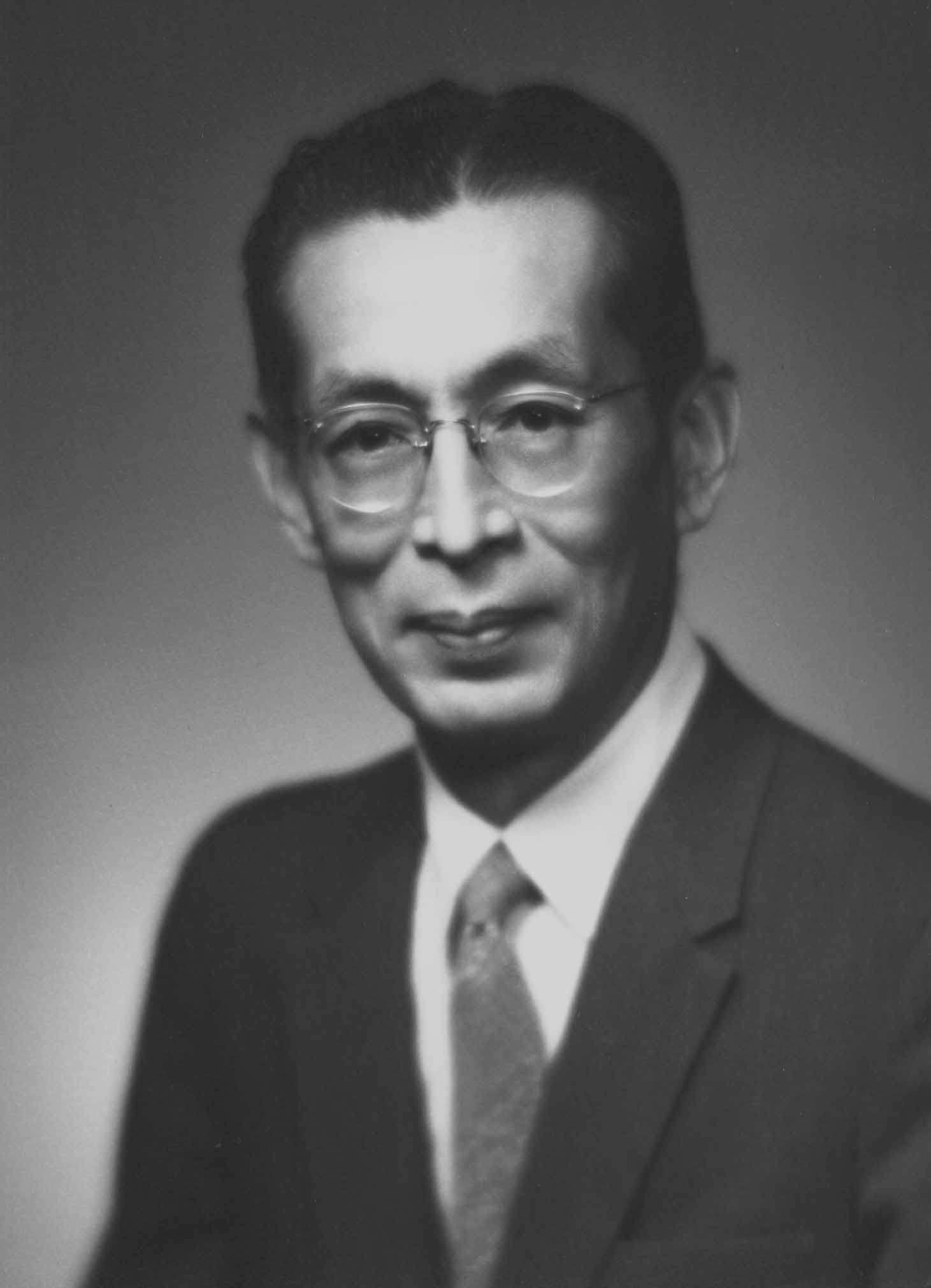 |
Paul K. Kuroda Alpha Sigma 1996 Inducted in 2012
Paul K. Kuroda received his bachelor’s and doctorate degrees from the Imperial University of Tokyo. His first paper was published in 1935, and he became the youngest faculty member at the Imperial University of Tokyo in 1944. In 1949 he sailed to America. His postdoctoral studies at the University of Minnesota were in analytical chemistry, but he returned to the study of natural and artificial radioactivity after joining the faculty at the University of Arkansas in 1952.
At the University of Arkansas he trained 64 Ph.D. students and several postdoctoral associates and befriended many undergraduate students. He officially retired from the University of Arkansas in 1987, but he remained active in research. He was the author or co-author of almost 400 publications, and he was the Honor Initiate at the 43rd Biennial Conclave in 1996.
|
 |
Gilbert Newton Lewis Sigma 1913 Inducted in 1982
Gilbert Newton Lewis received his doctorate degree at Harvard University under the direction of Theodore William Richards. From 1905 to 1912, Lewis was a professor of chemistry at the Massachusetts Institute of Technology. Then from 1912 to 1941, he served at the University of California at Berkeley as dean of the College of Chemistry and chairman of the Department of Chemistry. Lewis is noted for his work on chemical bonding (electron pair bond, octet rule, Lewis acids and bases) as well as his work with deuterium, the theory of color, and paramagnetism. He also is the author of the classic text Thermodynamics and the Free Energy of Chemical Substances, written in collaboration with Merle Randall, Delta 1907.
|
 |
Warren Kendall Lewis Alpha Zeta 1925 Inducted in 1998
Through his coordination of chemistry, physics and engineering into an independent discipline, Warren Kendall Lewis has been called the Father of Modern Chemical Engineering. He identified and quantified unit operations and was involved in much research on distillation, evaporation and petroleum cracking. Lewis was known for his aggressive teaching and demand of straight-thinking. Lewis received several honors throughout his lifetime, including the Priestley Medal in 1947, the first American Chemical Society Award in Industrial and Engineering Chemistry in 1956 and the AIChE Founders Award in 1955.
|
 |
Edwin N. Lightfoot Tau 1944 Inducted in 2008
Edwin N. Lightfoot earned his bachelor's and doctorate degrees in chemical engineering from Cornell University. He joined the faculty of the University of Wisconsin in 1953. Lightfoot's interests are in mass-transport reaction modeling, biological mass-transfer processes and separations processes. He is co-author of Transport Phenomena, a classic textbook used worldwide by chemical engineering students and teachers. Lightfoot has received numerous awards, including the National Medal of Science and the Society of Biology Engineering James E. Bailey Award for outstanding contributions to the field of biological engineering.
|
 |
William N. Lipscomb, Jr. Alpha Gamma 1939 Inducted in 2014
William N. Lipscomb, Jr., was a graduate of the University of Kentucky and Caltech. Together with his students, he is noted for achieving a quantum-mechanical understanding of the three-center two-electron bond, studies of boron hydrides and carboranes, the first accurate calculation of the ethane barrier and contributions to Hartree–Fock self-consistent field (SCF) theory. The mineral lipscombite was named after Lipscomb, whose group determined the structure. Lipscomb also developed an early theory of the chemical shift in nuclear magnetic resonance, and his group was among the first to determine the structures of large enzymes. Lipscomb was the 1976 Nobel Laureate in Chemistry for his theoretical chemistry results. Fellow Alpha Chi Sigma Brother and Nobel Laureate Linus Pauling was Lipscomb’s dissertation advisor. And two of Lipscomb’s students are Nobel Laureates, who in a way continued Lipscomb’s work.
|
 |
Rudolph A. Marcus Zeta 1965 Inducted 2014
Rudolph A. Marcus received his bachelor’s degree in 1943 and a doctorate degree in 1946 in experimental research from McGill University. He was a member of the faculties of the Polytechnic Institute of Brooklyn from 1951 to 1964 and the University of Illinois from 1964 to 1978. Then he joined the Caltech faculty as the Noyes Professor in 1978 and became the Kirkwood-Noyes Professor in 2013. Dr. Marcus has conducted research on almost every aspect of chemical reaction rate theory. A trademark of his research has been a strong interaction between theory and experiment. Dr. Marcus received the Nobel Prize in Chemistry in 1992, the Wolf Prize in Chemistry in 1985, the U.S. National Medal of Science in 1989 and various honorary doctorates and professorships and other awards.
|
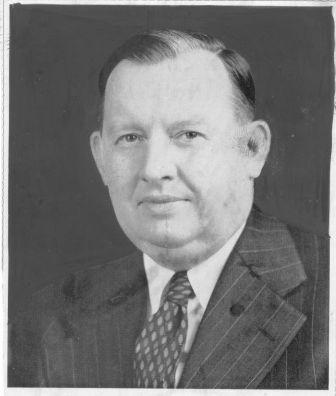 |
Carl S. Marvel Zeta 1918 Inducted in 1988
Carl S. Marvel received his doctorate degree from the University of Illinois in 1920 under the instruction of William A. Noyes, Sr., and Roger Adams, Omicron 1912. He served on the faculties at the University of Illinois from 1920 to 1961 and at the University of Arizona from 1961 to 1978. Brother "Speed" Marvel was one of the pioneers of synthetic polymer chemistry. His research in the 1930s laid the groundwork for much of today's polymer technology. He also played a key role in developing synthetic rubbers during WWII, and in his later years he developed important heat stable polymers. Marvel Hall at the American Chemical Societ headquarters is a tribute to his many years of ACS service, including its presidency in 1945.
|
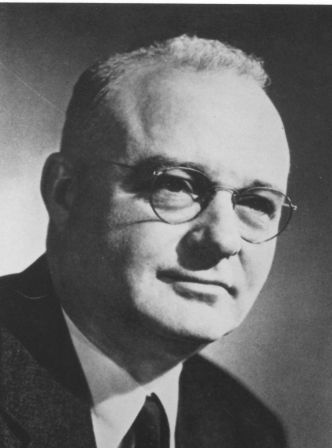 |
Thomas Midgley, Jr. Alpha Delta 1936 Inducted in 1986
Thomas Midgley, Jr., received his education at Cornell University and then achieved fame as an industrial chemist. His discoveries include dichlorodiflouromethane (Freon) as a stable, non-toxic, non-flammable replacement for ammonia in refrigerant cycles and tetraethyl lead as an octane booster for gasoline. Midgley discovered iron selenide, one of the first known catalysts for cracking hydrocarbons to yield aromatic compounds. His work earned the Nichol Medal, the Perkin Medal, the Priestley Medal and the Gibbs Medal. He also was president of the American Chemical Society.
|
 |
James Flack Norris Alpha Zeta 1920 Inducted in 1982
James Flack Norris received his doctorate degree from The Johns Hopkins University in 1895 under the direction of Ira Remsen. He was a faculty member at the Massachusetts Institute of Technology for 30 years, and for half of that time he served as director of the research laboratory in organic chemistry. Norris' research interests centered on the reactivity of atoms and groups in organic chemistry. He was president of the American Chemical Society for two years. "Sunny Jim" was a prolific author of textbooks, which he wrote without consultation to reference works other than tables of physical constants, believing that nothing should be included in a general text that a chemist does not remember as useful information.
|
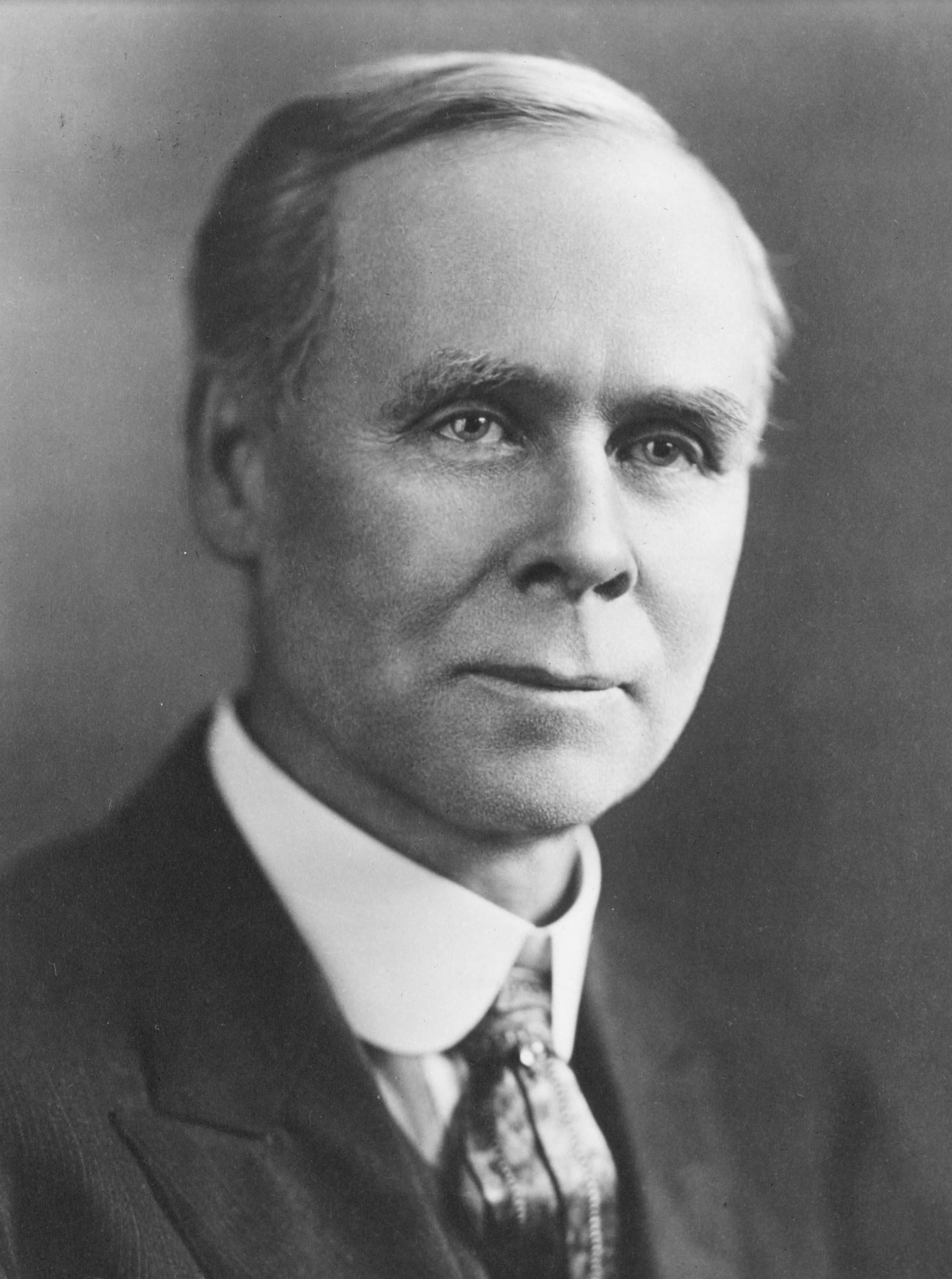 |
William A. Noyes Sr. Zeta 1912 Inducted in 2010
William A. Noyes Sr. received his doctorate degree from Johns Hopkins University in 1882. In 1885, he began developing the chemical program at the new Rose Polytechnic Institute. He left Rose in 1903 to become the first chief chemist at the U.S. National Bureau of Standards in Baltimore where he worked on atomic weight determination. Dr. Noyes arrived at the University of Illinois in 1907 and served as department head until his retirement in 1926. He was the architect of the chemistry program at Illinois, attracting such chemists as Roger Adams and Carl S. “Speed” Marvel. He also was involved closely with chemical literature, serving as editor of the Journal of the American Chemical Society (JACS) for 15 years and the first editor of Chemical Abstracts, among other publications. He won many awards, including the Nichols Medal and the Priestley Medal. He served as president of the American Chemical Society in 1920.
|
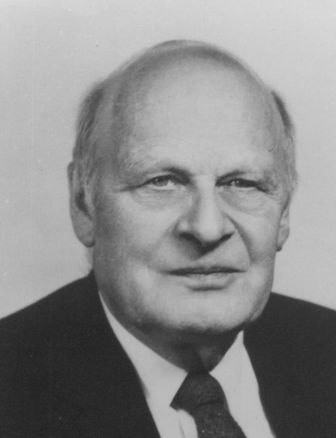 |
Lars Onsager Chi 1950 Inducted in 1983
A graduate from the Norwegian Technical Institute in 1925, Lars Onsager studied at the Swiss Federal Institute of Technology in Zurich and received his doctorate degree in theoretical chemistry at Yale University in 1933. He received numerous awards and honors for his outstanding contributions to our understanding of irreversible thermodynamics, electrolytic solutions, dielectric properties of liquids, the structure of ice, thermal diffusion in gases and the surfaces of solids. Among these awards, Onsager received the Nobel Prize in Chemistry in 1968 and was the recipient of the Presidential Award in Science, in addition to other science medals and honorary degrees.
|
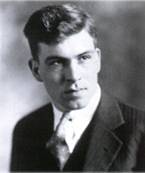 |
Donald Frederick Othmer Theta 1924 Inducted in 2002
Donald Frederick Othmer received degrees in chemical engineering from the University of Nebraska and the University if Michigan. Although he worked briefly for Eastman Kodak – during which time his research led to more than 40 patents and he design of the Othmer Still for studying properties of distilling mixtures – he spent most of his career at the Polytechnic University in Brooklyn, NY. There he carried out research in phase equilibria, thermodynamics, heat transfer and desalination while being perhaps the preeminent consultant in chemical engineering. He is known most widely, however, for his editorship of the Kirk-Othmer Encyclopedia of Chemical Technology and Philanthropy. Othmer's personal fortune, the result of shrewd investments, supported the Chemical Heritage Foundation (the Othmer Gold Medal of the CHF is named for him) and the International Chemistry Olympiad, as well as other organizations and activities.
|
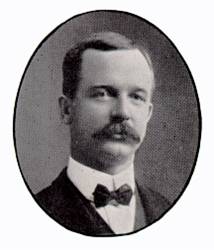 |
Charles Lathrop Parsons Mu 1911 Inducted in 2006
Charles Lathrop Parsons received his bachelor's degree from Cornell University in 1888. Upon leaving Cornell, he became assistant chemist in the New Hampshire Experiment Station at Hanover and taught chemistry at Hanover in Durham, N.H. In 1911, Dr. Parsons was appointed chief mineral chemist of the Bureau of Mines in Washington, D.C. In 1919, he resigned to enter private service, having served his country for eight years. During that time he obtained funds for establishing the National Radium Institute and had full charge of building the radium plant and developing methods for radium extraction. During WWI, through his efforts the U.S. was made independent of foreign countries for materials for explosives. He served as secretary of the American Chemical Society from 1907 to 1947, during which time the membership increased from 3,000 to more than 43,000 members. Some of his honors include Doctor of Science by the University of Maine, Doctor of Chemistry by the University of Pittsburgh, Nichols Medal for research and Legion of Honor officer grade by the French Government. In 1919, Parsons was elected the vice president of the International Union of Pure and Applied Chemistry and acted as America’s representative at the conference held in Rome in 1920. He received the Priestly Medal in 1932 for “distinguished service to chemistry.” In 1952 the American Chemical Society created the Charles Lathrop Parsons Award to recognize outstanding public service by a member of the American Chemical Society.
|
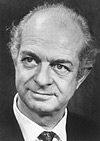 |
Linus Pauling Sigma 1940 Inducted in 1996
Linus Pauling, the only person to be awarded two unshared Nobel Prizes, probably is best known for his advocacy of Vitamin C as a cure for a wide range of ailments. Jumping to Oregon State University without finishing high school, Pauling's studies took him to Europe to work with Niels Bohr and Erwin Schrodinger. Pauling's first Nobel Prize (for chemistry) came in 1954 for his discoveries on the nature of chemical bonds. His second Nobel Prize (this one for Peace) came in 1962 for his contributions to an international ban on nuclear weapons testing. Pauling joined Albert Einstein and other prominent scientists to create the Emergency Committee of Atomic Scientists.
|
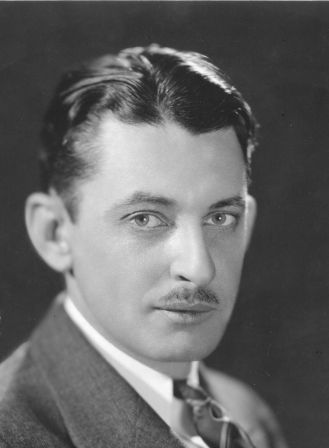 |
John Howard Perry Xi 1915 Inducted in 1987
John Howard Perry received his bachelor's degree in chemistry and his master's degree in chemical engineering from Northwestern University under the tutelage of Harry A. Curtis, Eta 1908 (GMA 1914-19). Then Perry received his doctorate degree in chemical engineering from the Massachusetts Institute of Technology. Perry is known for his development of improved catalysts for sulfuric acid production. He is the author of Perry's Chemical Engineers' Handbook, the definitive reference book for chemical engineers, as well as the Chemical Business Handbook.
|
 |
George C. Pimentel Beta Gamma 1942 Inducted in 1990
After serving in the Navy during WWII, George C. Pimentel earned his doctorate degree at the University of California at Berkeley, under Kenneth Pitzer, Sigma 1940. Pimentel remained at UC Berkeley and joined the faculty. During his 40 years there, he made significant advances in IR spectroscopy techniques, including discovering chemical lasers. Pimentel headed the NAS/NRC project, which produced Opportunities in Chemistry, popularly known as "The Pimentel Report," and he edited the National Science Foundation's CHEM Study textbook used in high schools worldwide. Pimentel was a member of the National Academy of Science, an associate director of the National Science Foundation for three years and president of the American Chemical Society in 1986. He also was a recipient of the National Medal of Science and the Priestly Medal.
|
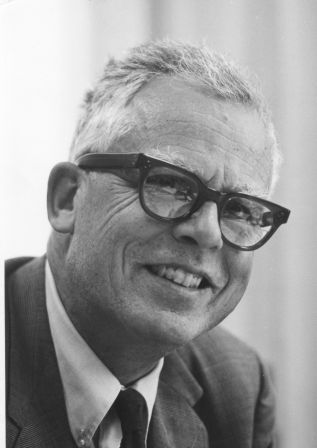 |
Kenneth S. Pitzer Sigma 1940 Inducted in 1994
Kenneth S. Pitzer received his first doctorate degree from the University of California at Berkeley in 1937 and became an instructor there. He quickly rose to professor then dean. After a term as director of the Atomic Energy Commission, he went on to be president of Stanford University then Rice University before returning to UC Berkeley. Pitzer was awarded the Priestly Medal, the National Medal of Science, the Gold Medal of the American Institute of Chemists, the Welch Award and a number of other prestigious awards.
|
 |
Glenn T. Seaborg Beta Gamma 1935 Inducted in 1994
For whom element 106 – Seaborgium – is named, Glenn T. Seaborg is responsible for the most significant change to the Periodic Table since its inception in the 19th century. He is credited for discovering a number of the transuranic elements. He also was part of the top secret Manhattan Project and was a frequent advisor to several United States presidents. His first new discovery came in 1940 when he successfully transmuted uranium into plutonium. In 1944, he formulated the actinide concept of heavy elements based on atomic structure.
|
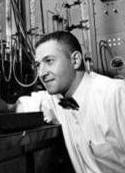 |
Irving Shain Alpha 1953 Inducted in 2006
Irving Shain began his academic career at the University of Wisconsin as an instructor where he made important contributions to the field of electrochemistry. His consummate achievement in this regard is a paper co-authored with Richard S. Nicholson, which was named by the Journal of Analytical Chemistry as one of the 10 most cited papers from 1945 to 1999. He is best known as the person who “invented” cyclic voltammetry, one of the most commonly used electrochemical techniques and the best tool for studying the mechanism of redox reactions. It not only can indicate the chemical steps in an overall electrode potential reaction but also whether or not the reaction is reversible. In addition to his contributions to the science of chemistry, Shain also served as chemistry department chair, vice chancellor for academic affairs and chancellor at the University of Wisconsin and as vice president and provost at the University of Washington. As chancellor at the University of Wisconsin, Shain established the University Research Park to help transfer technology from academia to a commercial setting. After retirement, Shain remained active with the University Research Park as a vice president and trustee.
|
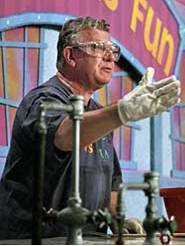 |
Bassam Z. Shakhashiri Zeta 1970 Inducted in 2004
Born in Lebanon in 1939, Bassam Z. Shakhashiri earned his bachelor's degree from Boston University and his master's and doctorate degrees from the University of Maryland. A tireless advocate for science education, Shakhashiri founded the Institute for Chemical Education in 1983 and served as assistant director of the National Science Foundation for Science and Engineering Education from 1984 to 1990. Among his many awards and honors are the American Chemical Society's George C. Pimentel Award in Chemical Education in 1986, the Manufacturing Chemists Association's Catalyst Award in 1979, the American Association for the Advancement of Science Award for Public Understanding of Science and Technology in 2002 and a collection of teaching awards and honorary degrees. Shakhashiri currently is professor of chemistry at the University of Wisconsin, holds the William T. Evjue Distinguished Chair for the Wisconsin Idea and directs the Wisconsin Initiative for Science Literacy. He is perhaps best known, however, for his chemical demonstration shows and in particular for his annual demonstration "Once Upon a Christmas Cheery in the Lab of Shakhashiri," which began in 1969. Shakhashiri has inspired generations of colleagues, Brothers and students of all ages with his motto, "Science is Fun."
|
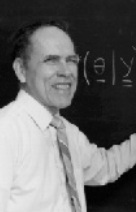 |
Warren E. Stewart Alpha 1945 Inducted in 2008
Warren E. Stewart completed his chemical engineering undergraduate and master's work at the University of Wisconsin and earned his doctorate degree from the Massachusetts Institute of Technology. Stewart began his career at Sinclair Research Laboratories, after which he joined the Chemical Engineering Department at the University of Wisconsin. Stewart was knowledgeable in a wide array of chemical engineering topics. Of particular interest to him were transport phenomena, fractionation systems, chemical reactors, computational modeling, parameter estimation and model discrimination. He is well known as one of the authors of Transport Pheonmena, a textbook that is cited as "changing the direction of chemical engineering teaching everywhere in the world." Stewart received numerous awards in his field and for excellence in Teaching.
|
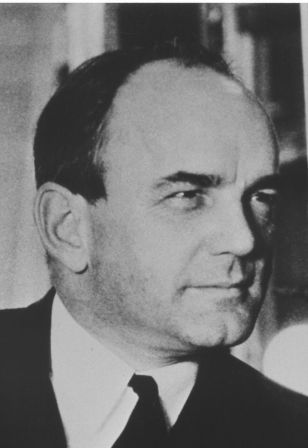 |
Frank Clifford Whitmore Omicron 1920 Inducted in 1982
Frank Clifford Whitmore was educated at Harvard University, obtaining a doctorate degree in 1914 under the direction of Charles Loring Jackson and Elmer P. Kohler, Omicron 1916. After serving on the faculty of Northwestern University, he became dean of the School of Chemistry and Physics at Pennsylvania State University in 1929, a position he held until his death. Whitmore was president of the American Chemical Society in 1938 and was a member of the National Academy of Sciences. He was an expert in organomercury chemistry and author of Organic Compounds of Mercury. He was renowned for his research on the electronic theory of mechanisms of organic molecular rearrangements.
|
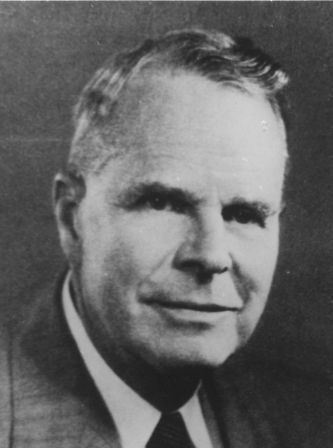 |
Hobart Hurd Willard Alpha Beta 1916 Inducted in 1985
Hobart Hurd Willard received his doctorate degree at Harvard University after receiving his bachelor's and master's degrees from the University of Michigan. Willard returned to Michigan where his research in analytical chemistry broke ground into fundamentally new gravimetric and volumetric methods. Willard's texts Willard, Merritt and Dean and Willard and Diehl are well known to all analytical chemists. Among his analytical innovations are the introduction of perchlorate chemistry and cerium (IV) chemistry. He was renowned as a tough taskmaster in the classroom. His awards include the Fischer Award in 1951 and the Anachem Award in 1953.
|
Back to Top
| |
| Copyright © 1994-2017 Alpha Chi Sigma Fraternity, Inc. All rights reserved.
|
|